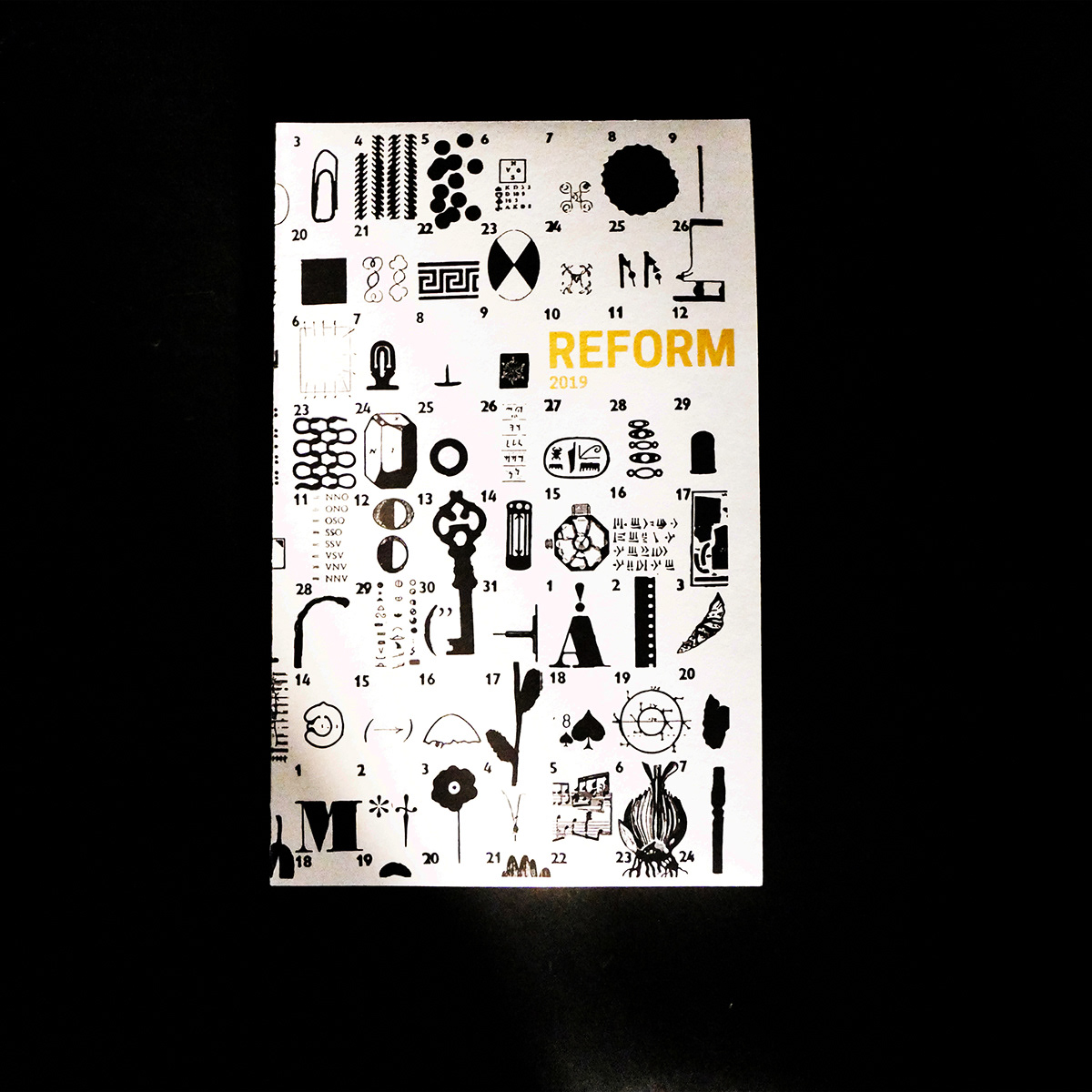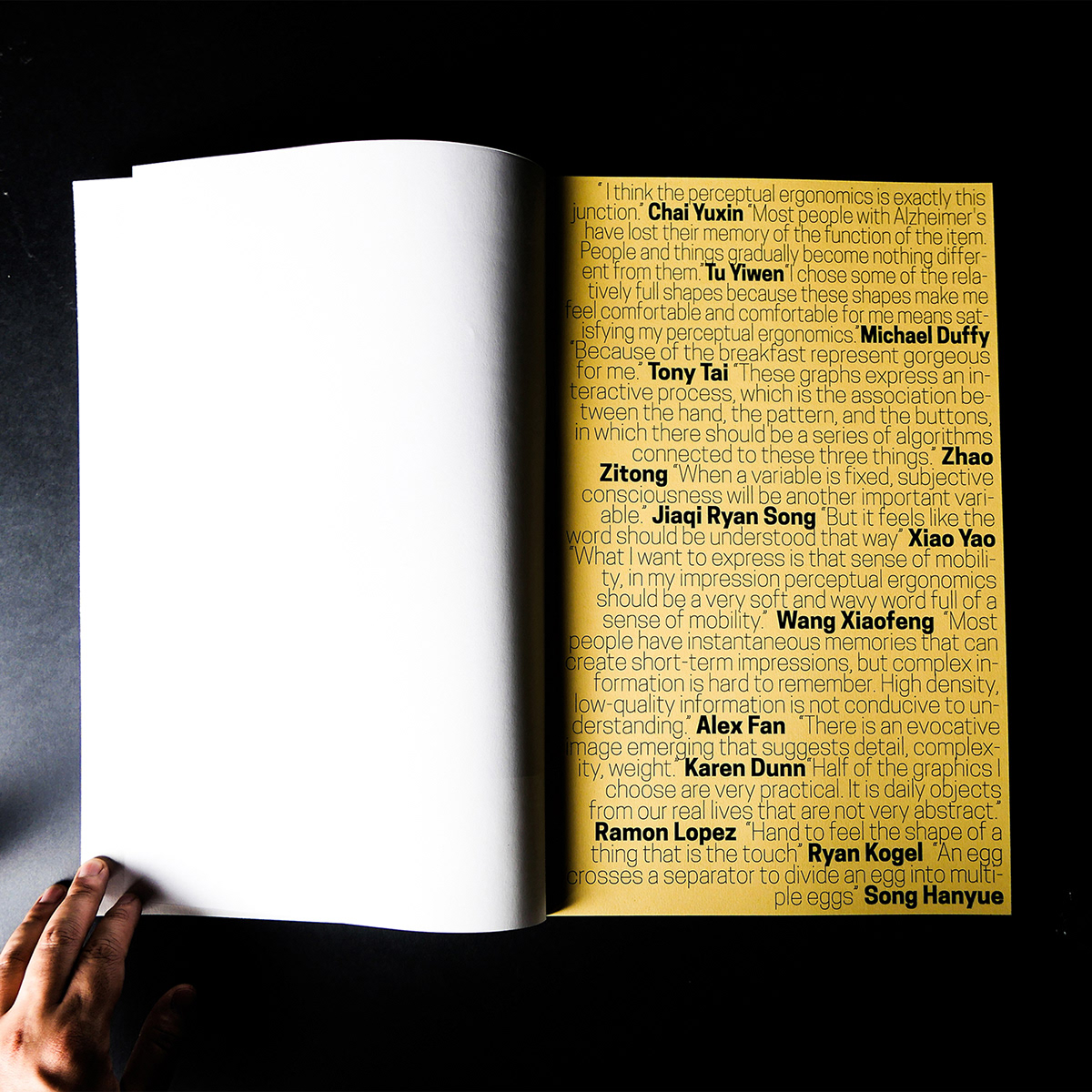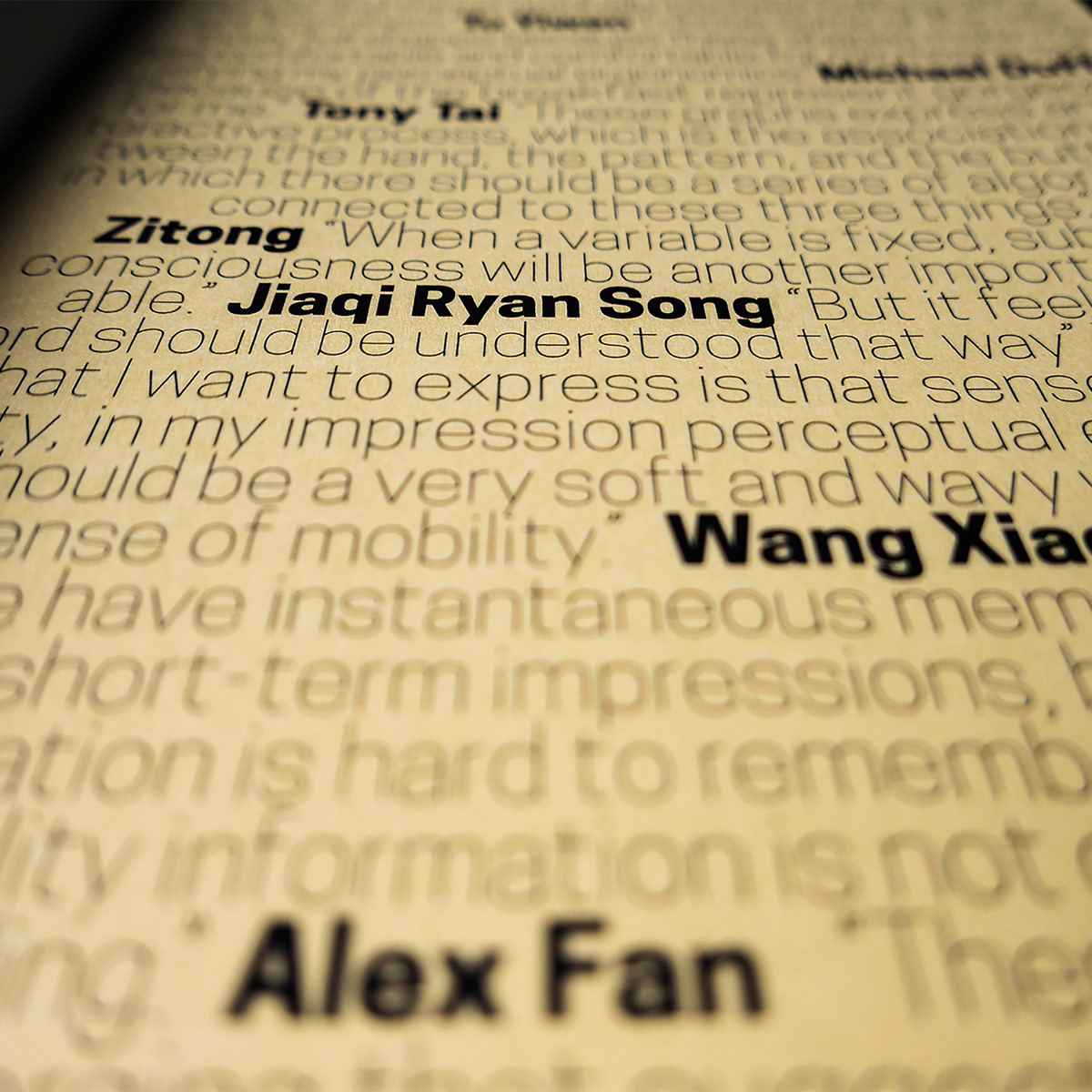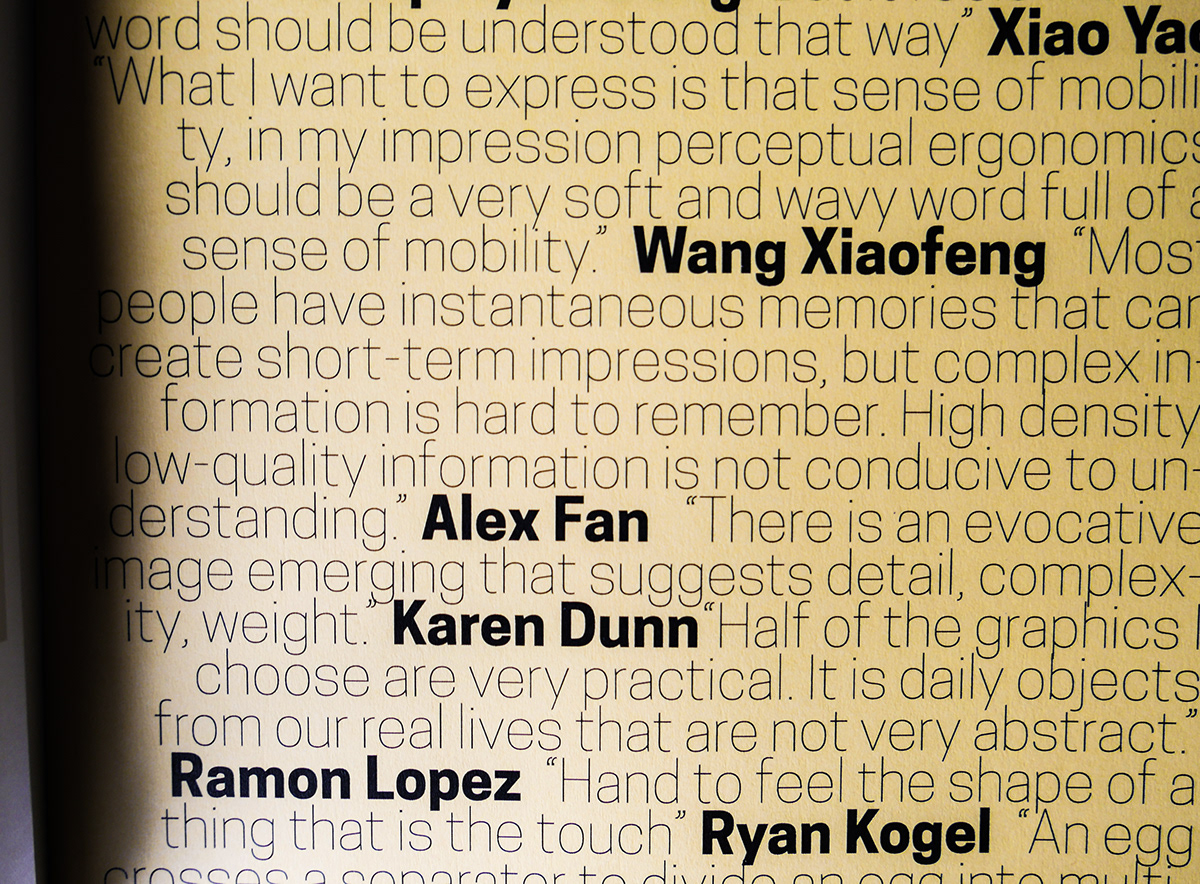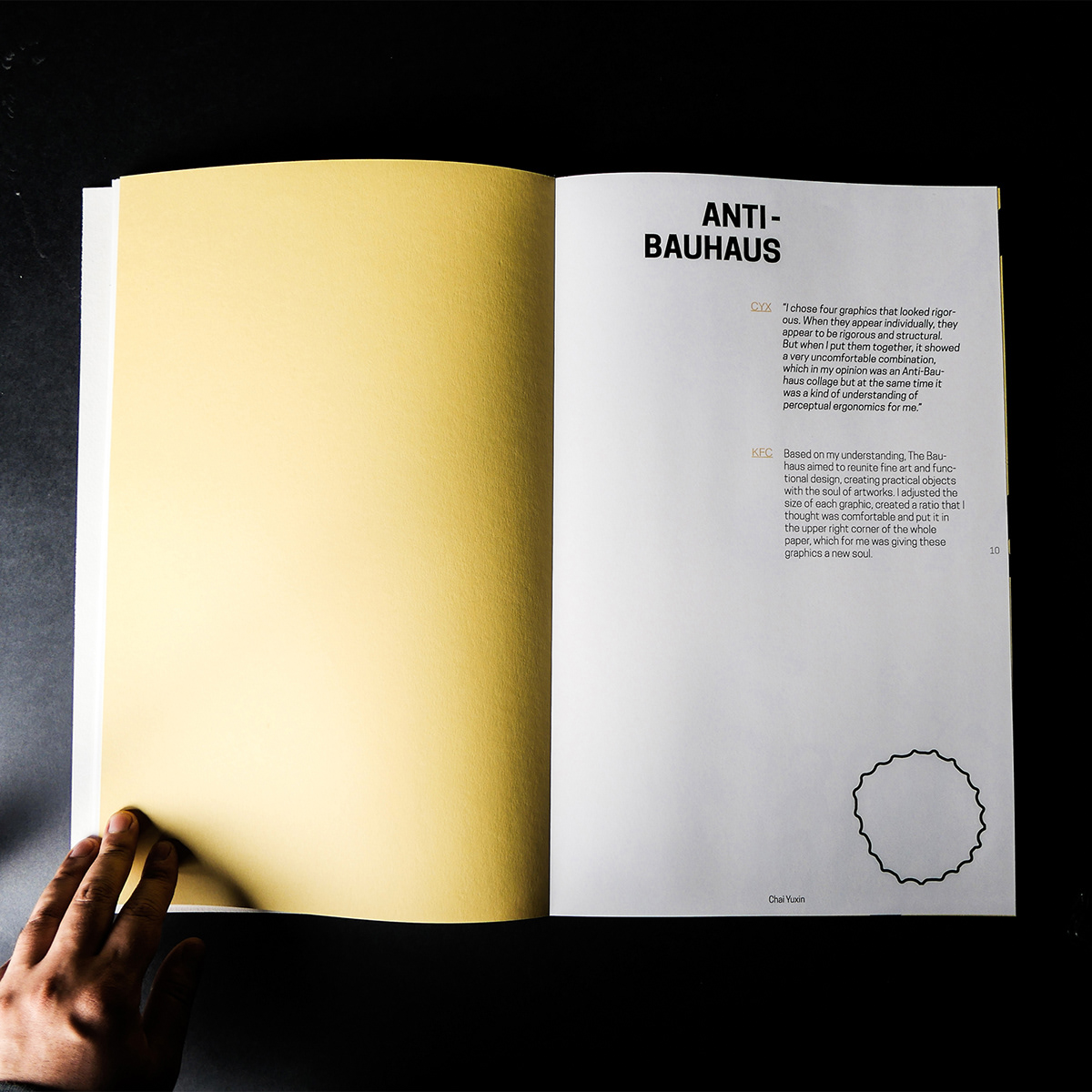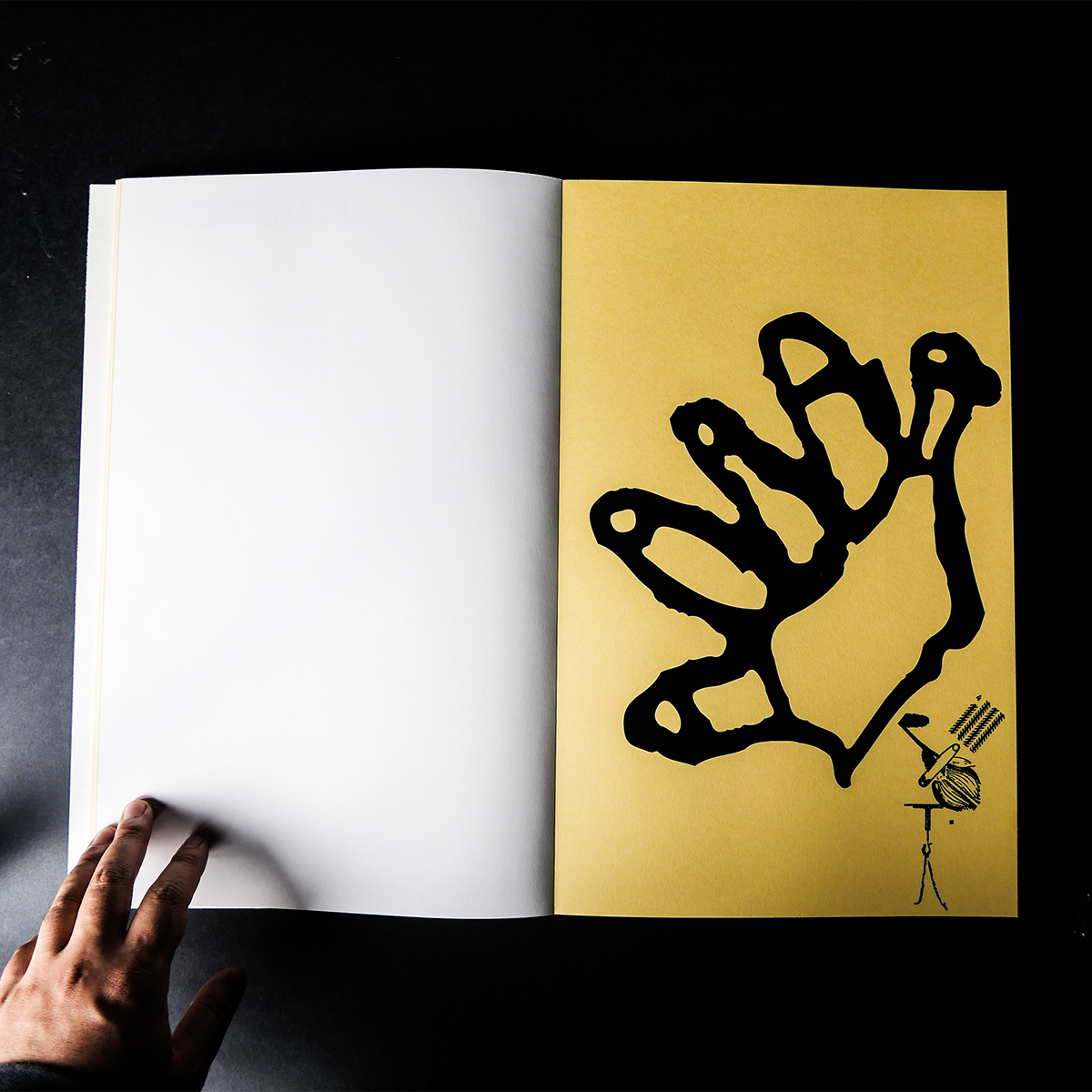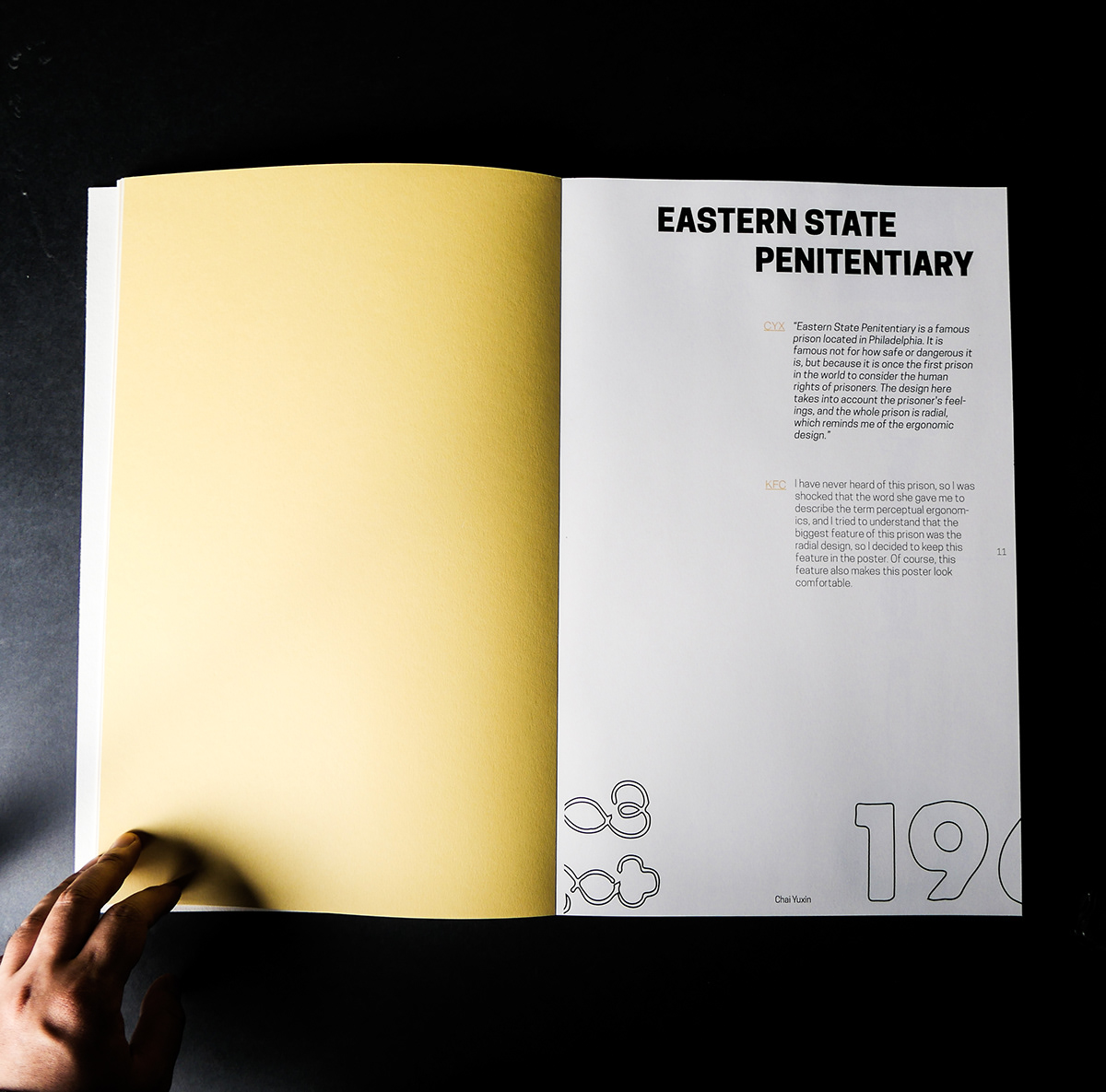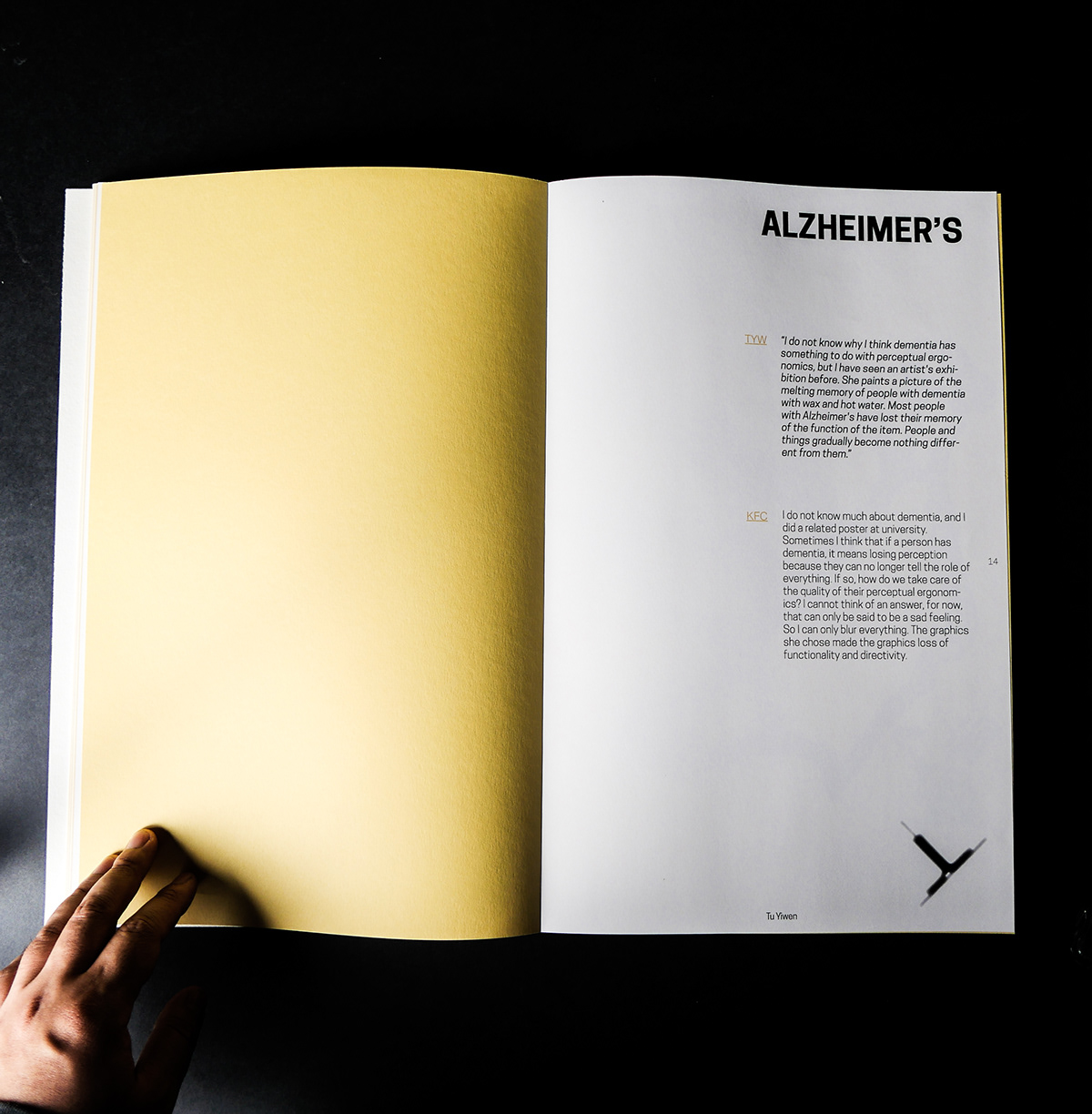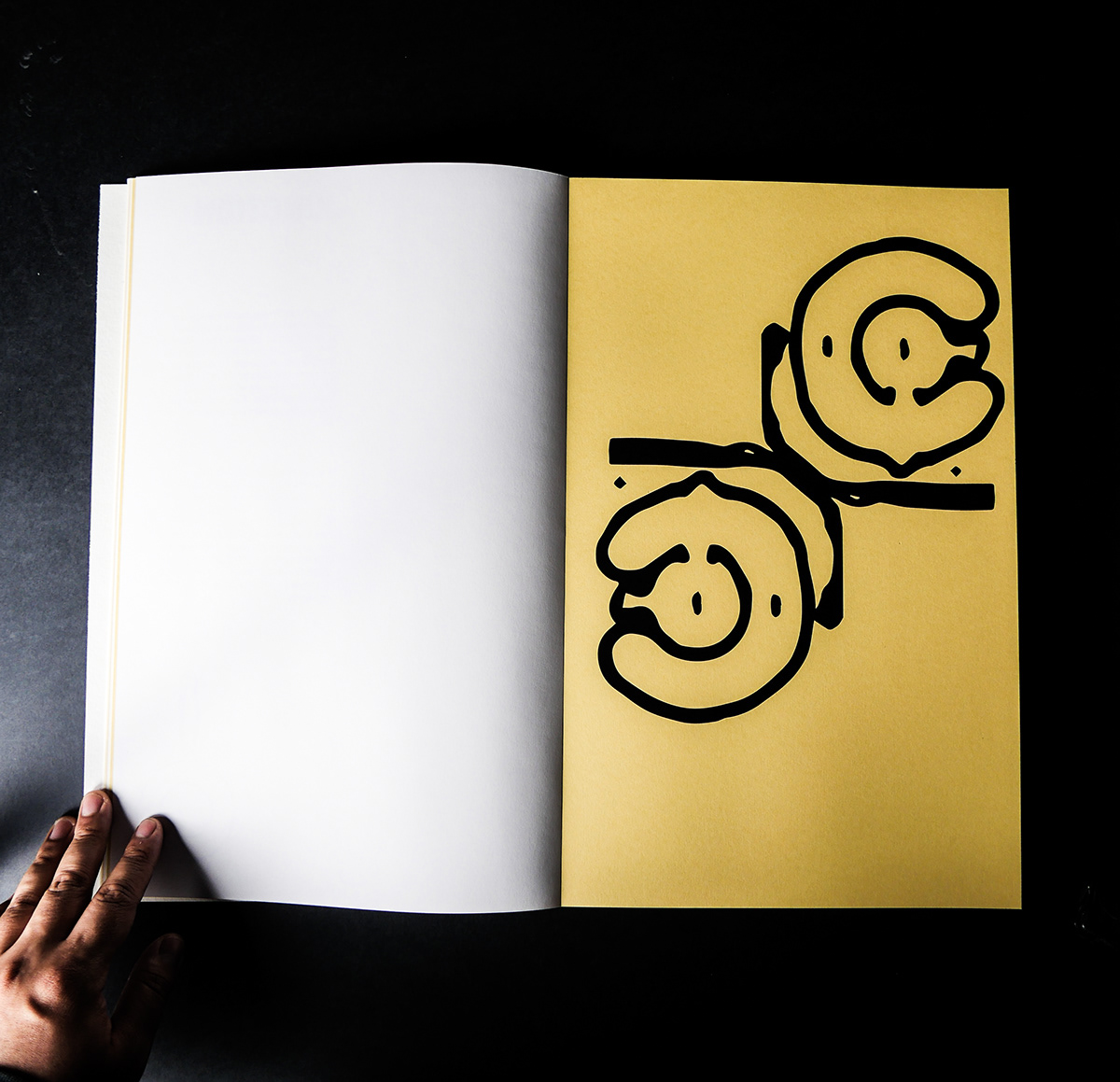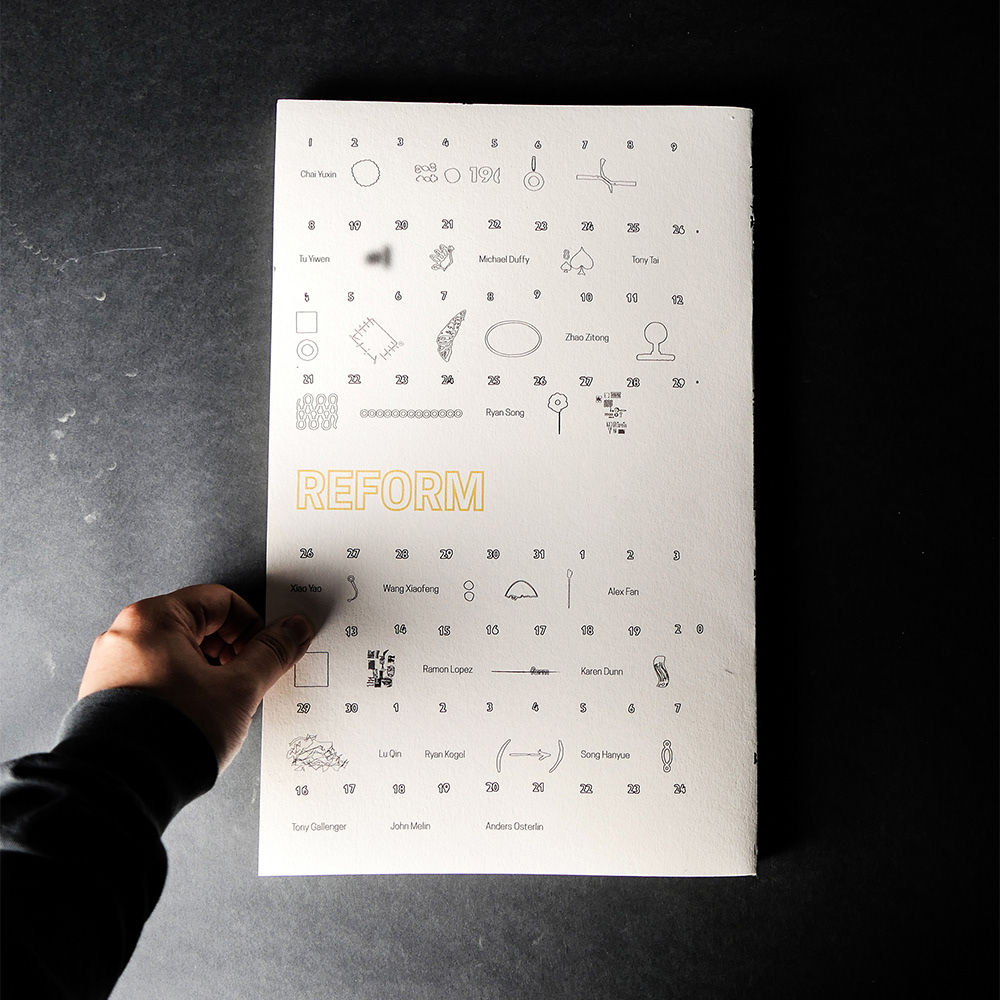In the course of my entire thesis research, I have been exploring a way to incorporate ergonomics theory into graphic design. I located my goal in the esoteric and extensive field of perceptual ergonomics. In the process of learning, I gradually developed my understanding of perceptual ergonomics, and I tried to incorporate perceptual ergonomics into the design. This case shows that the perceptual ergonomics methodology offers a way to think about design as a process that provides space for critical reflection and meeting the psychological needs of audiences in the object, experience, or design solution offered. However, this is an unproven assumption because how to create space is not an easy question.
So this book is an example of how I can involve different people as much as possible in the design process, turning the design into an interactive process. I interact with the audience, and we are all designers of this book. Participation is necessary to complete the experience and generate meaning — and this dynamic situation contributes to the existence and quality of perceptual ergonomics.
I chose the cover of a 1960 Form magazine as my raw material (see cover). That is a poster containing a lot of daily objects. Because of the age, the content does not have many items related to science and technology; I split all the content into small pieces of material to provide to the participants. Since the original poster is not very specific to the depiction of each item, everyone's understanding of each item will be different, which is why I chose this poster, improving the space to create.
Participants are asked two identical questions before they participate: how do you understand the term "perceptual ergonomics"; moreover, why you did you collage like this? In the process of collage, the method is not limited, and the number of choices is not limited — the process only needs participants to express as completely as possible the words they want to express. In this process, I hope to improve everyone's participation in a design project. When we work together, we can create a whole new way of designing. The increase in participation also improves people's perceived ergonomic satisfaction in the design.
